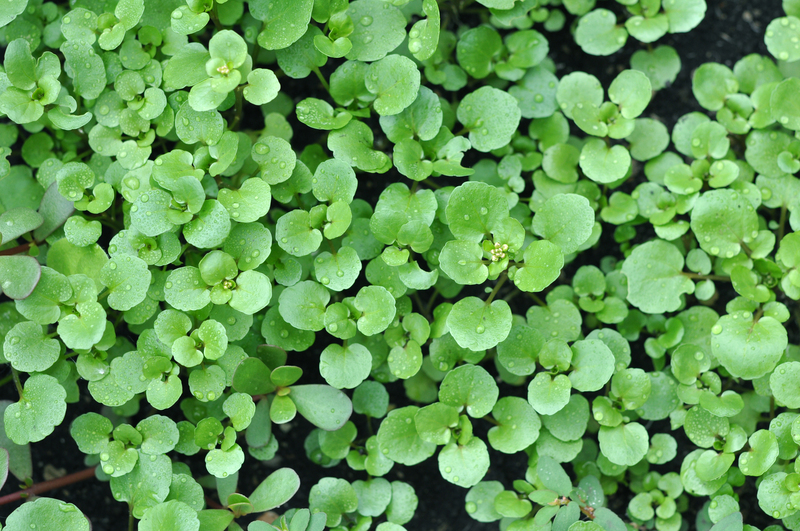Nurturing Orchids with Love and Skill
Posted on 27/08/2025
Nurturing Orchids with Love and Skill: The Ultimate Guide
Orchids are more than just beautiful houseplants; they are living masterpieces that require dedicated care, patience, and a bit of artistry. If you're passionate about nurturing orchids with love and skill, this comprehensive guide will help you unlock their true potential. Whether you're a beginner or a seasoned grower, read on to discover effective orchid care techniques that lead to vibrant blooms and thriving plants.

Understanding Orchids: A Brief Overview
To master the art of orchid nurturing, it's essential to understand the unique characteristics of these fascinating plants. Orchids belong to the Orchidaceae family, one of the largest plant families on Earth, boasting over 25,000 species and countless hybrids. From the exotic Phalaenopsis and Cattleya orchids to rare miniatures, each type offers enchanting blooms and growth patterns.
- Epiphytic Orchids: These grow on trees in their native habitats, taking nutrients from the air and rainfall.
- Terrestrial Orchids: These grow in soil and are often found in forests and grasslands.
- Lithophytic Orchids: These orchids thrive on rocks and cliffs, enduring harsher conditions.
No matter the type, nurturing orchids with a loving touch and skilled hands is key to their longevity and beauty.
Setting the Stage: Choosing the Right Orchid and Environment
Selecting Your Orchid
Beginners often start with Phalaenopsis (Moth Orchids) because of their adaptability and forgiving nature. For the ambitious gardener, Cattleya or Dendrobium orchids offer rewarding challenges.
Creating a Suitable Environment
Orchids are sensitive to their surroundings. Mimic their natural habitat for the best results:
- Light: Bright, indirect sunlight is ideal. East-facing windows or filtered light work best.
- Temperature: Most orchids thrive in temperatures between 65-80?F (18-27?C) during the day and slightly cooler at night.
- Humidity: Orchids love humidity. Aim for 40-60% to mimic the tropics, using a humidifier or pebble tray if needed.
Orchid Potting Mix and Repotting Tips
Unlike most houseplants, orchids require special potting media:
- Bark Mix: Ideal for most epiphytic orchids; provides excellent drainage and aeration.
- Sphagnum Moss: Retains moisture; suitable for young or moisture-loving orchids.
- Specialty Orchid Mixes: Available at garden centers, often containing bark, charcoal, and perlite.
*Repot your orchid every 1-2 years, preferably after blooming. Use sterile tools and avoid burying the roots too deep.*
Common Steps to Repotting Orchids
- Gently remove the orchid from its old pot, taking care not to damage roots.
- Trim off dead or rotting roots with sterilized scissors.
- Place the orchid in fresh potting mix at the same depth as before.
- Water lightly and allow the plant to settle before resuming regular care.
The Art of Watering: Keeping Your Orchids Hydrated
Watering is both a science and an art, especially when nurturing orchids with love and skill. *Overwatering is one of the most common mistakes.*
- Check the roots and media: Water only when the top inch feels dry, and the roots turn silvery.
- Water thoroughly: Let water drain through the pot; never let your orchid sit in standing water.
- Seasonal adjustments: Water more in warm months, reduce during winter or dormancy.
*Misting can supplement humidity, but is not a replacement for proper watering.*
Fertilizing Orchids: Feeding for Vibrant Growth
Orchids need nutrients to develop sturdy leaves and vibrant blooms. Use a balanced orchid-specific fertilizer (20-20-20 or similar) at half-strength every second or third watering.
- "Weakly, weekly": Fertilize lightly but regularly.
- Flush the pot: Once a month, water heavily to remove accumulated salts.
- Seasonal needs: Fertilize less during rest periods.
Remember: Over-fertilization harms orchids. It's always safer to err on the side of caution!
Light and Placement: Key Factors in Flowering
Proper light is essential for both growth and blooming. When nurturing orchids with skill, pay attention to leaf color as an indicator:
- Healthy green: Enough light for growth and flowering.
- Dark green leaves: Insufficient light; move closer to the window.
- Yellowish/red tinges: Too much light; consider a sheer curtain to filter sunlight.
Rotate the pot occasionally to promote even growth and prevent your orchid from growing lopsided.
Orchid Care Through the Seasons
Spring and Summer Orchid Care
- Increase watering and humidity.
- Fertilize regularly to support active growth.
- Check for pests like aphids and treat quickly.
Autumn and Winter Orchid Care
- Reduce watering but don't let the potting mix dry out completely.
- Move orchids away from cold windows or drafts.
- Allow extra rest time if your orchid is dormant; don't force blooming.
Troubleshooting: Common Orchid Problems and Solutions
Yellow Leaves
*Can be caused by overwatering, old leaves dying off, or sudden location changes.* Simply remove dead leaves and adjust care routines.
Root Rot
Caused by persistent overwatering or poor drainage. Repot the plant, remove affected roots, and allow the mix to dry between waterings.
Pest Infestations
Look for sticky residue, discolored spots, or webbing. Use insecticidal soap or neem oil sparingly, and always isolate affected orchids to prevent spread.
Failure to Bloom
Often due to insufficient light or inadequate feeding. Try increasing light exposure, adjusting fertilization, or providing a slight temperature drop at night to encourage blooming.
Emotional Benefits: Why Growing Orchids is Worth It
Nurturing orchids with love and skill does more than yield breathtaking flowers -- it brings joy, tranquility, and a deep sense of accomplishment. The process of caring for orchids reduces stress, fosters mindfulness, and connects you intimately to nature. Each new bloom is a reward for your patience, attention, and devotion.
Orchids also make meaningful gifts, symbolizing beauty, strength, and resilience. Sharing an orchid you've grown yourself is a wonderful way to spread positivity and inspiration to friends and family.
Expert Tips for Orchid Lovers
- Check your orchids regularly for early signs of stress or pests.
- Label your plants with names and care notes to track their needs.
- Join local orchid clubs or online forums for support and advice.
- Experiment with different types to discover your favorites.
- Practice patience. Some orchids bloom only once a year, but their flowers can last for months!

Frequently Asked Questions about Nurturing Orchids
How often should I water orchids?
Watering truly depends on your orchid's species, potting medium, and climate. As a rule, water when the top inch of potting mix feels dry. For most orchids, this means every 5-10 days.
Can orchids grow in regular potting soil?
No, orchids require specialized orchid mix for proper drainage and root aeration. Regular soil retains too much moisture and suffocates roots.
Why are my orchid's blooms wilted or dropping prematurely?
Common causes are root rot, drastic temperature changes, insufficient humidity, or pests. Diagnose the problem by checking roots, leaves, and watering habits.
How can I make my orchid rebloom?
Only healthy, mature orchids rebloom consistently. Create ideal conditions: steady watering, adequate feeding, slightly cooler night temperatures, and plenty of filtered light.
Nurturing Orchids with Love and Skill: Conclusion
Nurturing orchids with love and skill is a journey filled with rewards and learning opportunities. With patience, observation, and the right techniques, you can help these exquisite plants flourish year after year. Whether you're enchanted by the sight of a single blossom or inspired by a windowsill filled with thriving orchids, your efforts will be returned many times over in beauty and serenity.
Remember: Each orchid is unique and, with a bit of skill and a lot of love, you can master the art of growing them. Happy orchid nurturing!

